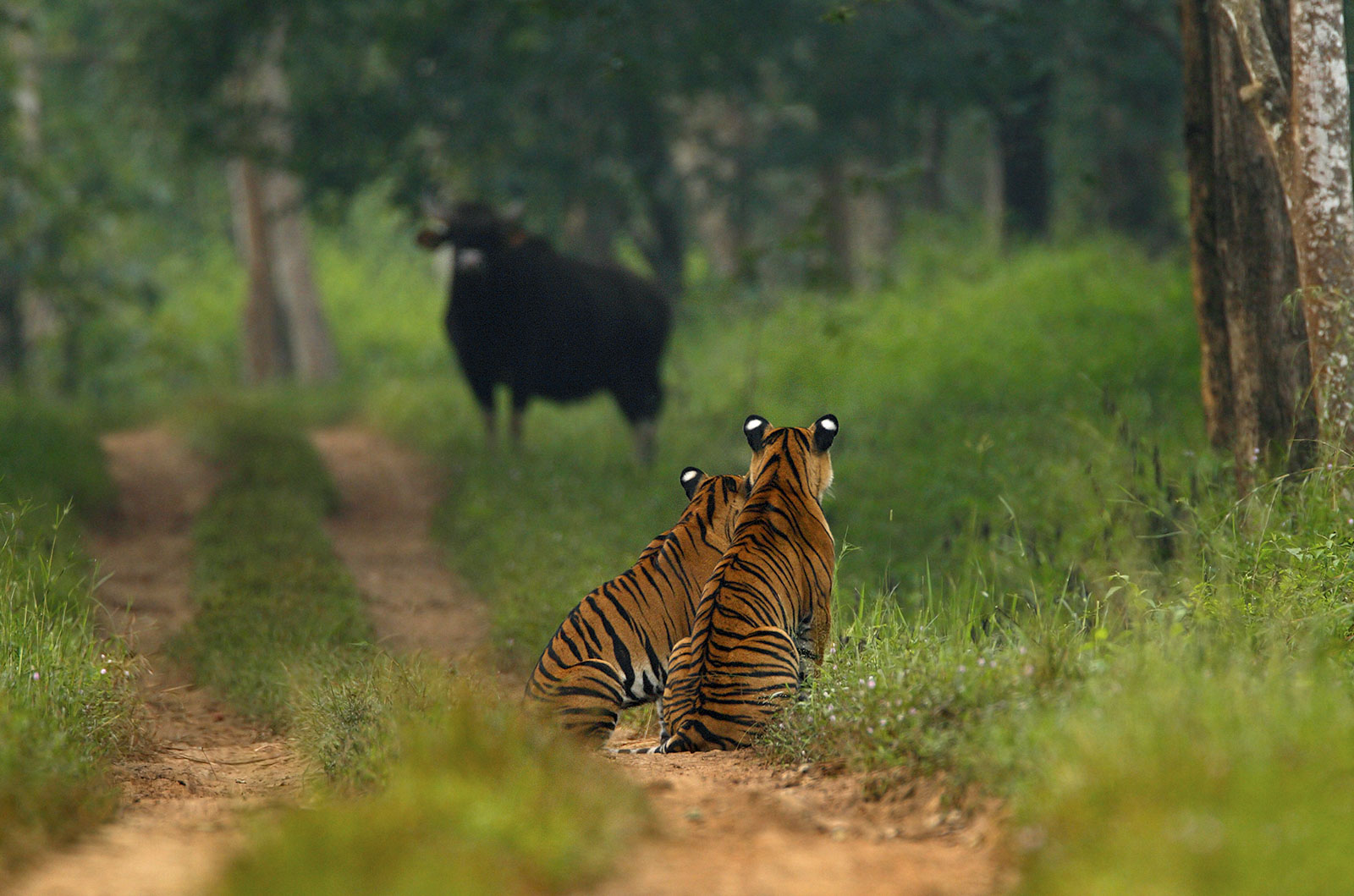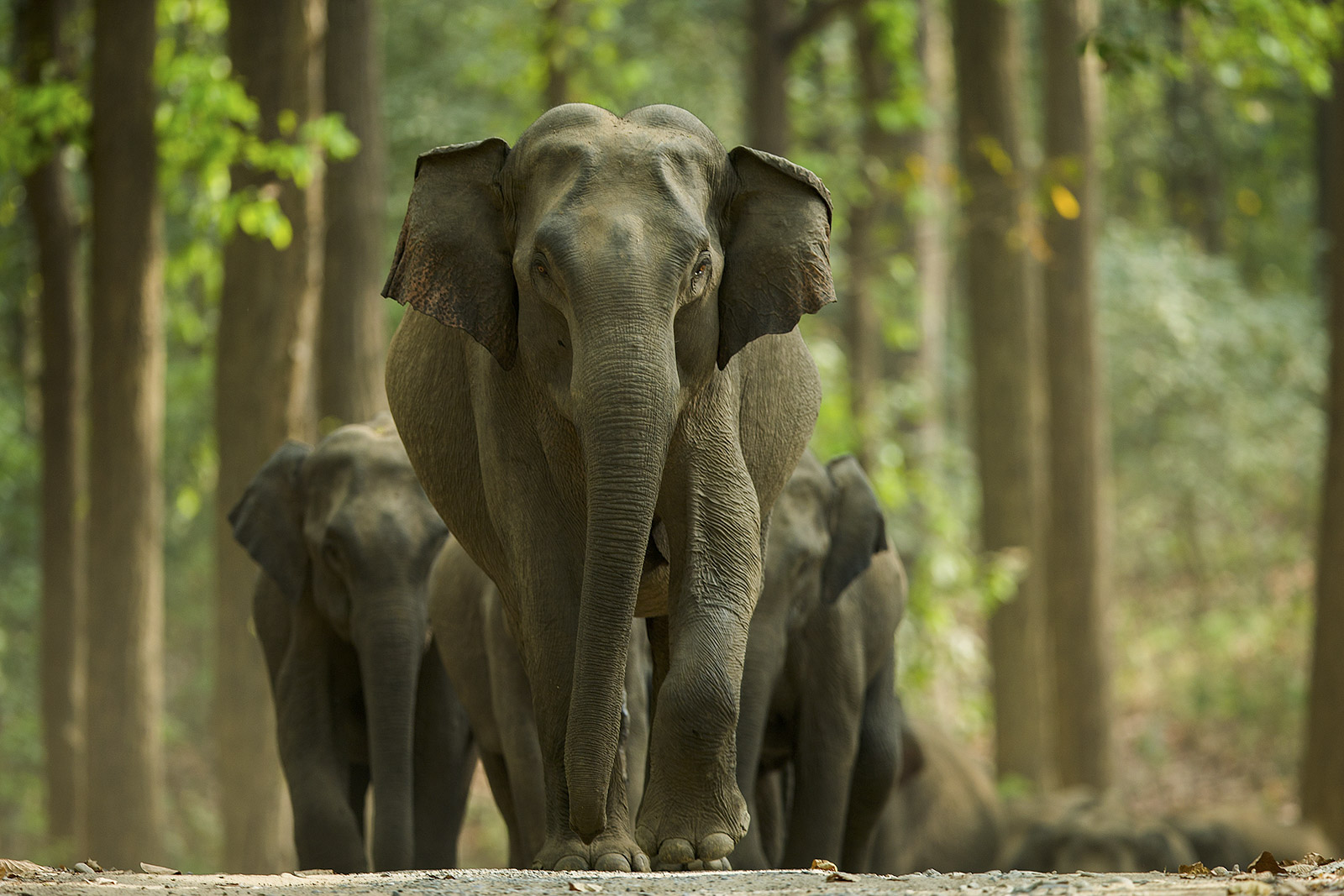Eye of the Tiger: An Interview with Sudhir Shivaram

Sudhir Shivaram is one of the most well known and popular photographers in India. His images give us a rare glimpse into the wealth of wildlife his country has to offer, ranging from the Bengal tiger to the Asian elephant. Sudhir was one of the brand ambassadors for Canon India and was the winner of Sanctuary Asia Wildlife Photographer of the Year 2012.


We were lucky enough to be able to steal Sudhir away from his busy schedule and talk to him about his life behind the lens. So without further ado…
When did you first develop your interest in wildlife photography and how long have you been taking pictures for?
I did my Engineering degree at Malnad College of Engineering, Hassan. Hassan is located in the Western Ghats belt of India. I used to go trekking quite often there and that got me interested in nature and wildlife. I moved to Bangalore in 1995 for work and was soon part of a like-minded group of people who introduced me to wildlife photography. We used to frequent the forests of Kabini, Bandipur and BR Hills, as these were quite close to Bangalore. Thus developed my interest towards this genre, and I have been shooting wildlife ever since.
What do you find inspires you as a photographer the most?
Nature itself is so amazing that I can spend the entire day in the forest without taking a single image. The kinds of surprises nature springs on you and the number of things it teaches you are fascinating. The other important thing is – wildlife is not just tigers and leopards. The behavior of every single living being in the jungle is different and makes for an interesting study. To be honest, I am not a tiger person. I do not go into the jungles to look for tigers or leopards. So many times I have spent a lot of time with common subjects like spotted deer or sambar deer. Birds are – and always have been – my favorite subjects. These beautiful, colourful creatures are so captivating that you forget all of your worries when watching their unfettered action.
Capturing those moments and sharing with friends and family helped me to spread the joy of nature. As my passion towards wildlife grew, I got involved in a lot of conservation related activities and projects. I contribute my images free of cost for this purpose to numerous NGOs and other organisations worldwide. This makes me happy, as I am able to contribute back to nature in a small way. But above all, the ultimate inspiration is my own satisfaction of being at one with nature!
What is your most memorable wildlife encounter?
Having started wildlife photography around 1995-96, I would frequent the forests around Mysore almost every month. However, it was a good 10 years before I sighted a tiger in the wild. That day is still etched in my memory. On October 25th 2006, during a routine safari at the Bhadra Tiger Reserve, we spotted a herd of gaur, which I wanted to photograph. When I requested the driver to stop the jeep, he asked me what I wanted to shoot. On hearing I wanted to shoot the gaur, he pointed to the two tigers right by the jeep track. My jaw dropped on seeing the two sub-adult tigers staring the gaur in the eye! It was a wildlife moment that I will cherish forever; the image remains one of the best and most unique tiger images shot in a South Indian jungle.
We’re great fans of the insight you bring to India and its wildlife through your camera. What would you say are the highlights of Indian wildlife?
When people ask me which is the best park in India – I have only one answer for them. Every park in India is unique and is beautiful in its own way. The Deserts of Kutch to the Grasslands of Dhikala and Kaziranga; the tigers of Ranthambhore and Bandhavgarh; the leopards of Kabini to the Birdlife in Bharatpur; the meadows of Kanha to the wide variety of wildlife in the Western Ghats and the mangroves. Each wildlife destination in India has its own charm, and the diversity of our country is what I love the most.
What is your favourite photo you’ve taken or moment you’ve experienced, and what made it so special?
My “Tiger Siblings and Gaur” (seen above) has been my all-time favourite image. Many of my friends who are into wildlife mention that it’s probably the best tiger image photographed in India. It was photographed at Lakvalli Forest Range, Bhadra Tiger Reserve. Sighting a few spotted deer was itself a challenge in this forest during those times. We were lucky to sight the tigers and the gaur, not to mention their interaction. For more images and the complete story, see Tale of Two Tigers and a Herd of Gaur.
The images proved to be of extreme importance from a conservation point of view when Wildlife Conservation Society (WCS) discovered that one of the tigers had travelled all the way from Bhadra to Dandeli Anshi National Park, over a distance of 270 kilometres. This was the first time in history of tiger study that photographic evidence was there to support that a tiger could actually travel such long distances. It was believed that the home range of tiger was 60 sq km. This opened avenues of study, because there was human habitat en route and the tiger could not have travelled as the crow flies. You can read more on this here: Dandeli – Anshi Tiger Reserve.
What do you try to get across in your photos and what makes them unique?
I believe that when I am taking a photograph of any animal, there are many elements coming together to help create a good photograph – just like there are many ingredients that go into creating a good dish. I try to identify and capture these elements. There are two different approaches I take for my images: to get a close-up of the animal to show its beauty, and to show the animal in its habitat, documenting the beauty of the forest it thrives in. Ultimately, I try and show the mood of the whole place.
I like to take story-telling images, especially the ones showing the habitat. I try to capture all the moments so that the viewer gets a feel for the place.
What are the most essential items that you carry with you in your camera bag?
I plan my equipment for each safari based on the destination. Though I have an array of equipment, I may not be in a position to carry all of it. My main two lenses are the Canon EF 400mm f2.8 L IS II and the Canon EF 800mm f5.6 L IS along with the Canon 1DX and the Canon 1D Mark IV cameras. Though I would love to carry both all the time, I decide on one of them based on how and what I want to shoot. For certain destinations I may like to do a lot of close-up shots; for that I carry the 800mm. If it is action and nice portraits, then the 400mm f2.8 is my preferred lens. The standard lens I carry for all my tours is the Canon EF 70-200 f2.8 L IS II. This is one focal length every wildlife photographer needs to have. It’s fast and flexible for low light and animals in the habitat photography.

As for other equipment, I have come to realise that a mobile phone comes in very handy in certain instances while clicking photographs. Sometimes I come so close to these animals that it is extremely difficult for me to click them with a 400mm or a 800mm. I just keep these aside and start clicking with my cell phone. This is one piece of advice I give to a lot of people – to have a decent mobile phone camera while going on such expeditions.
What advice would you give to someone wanting to ‘make it big’ in the nature photography world?
There are two important points to be noted to become a good wildlife photographer:
You need to understand the fundamental concepts of photography: exposure, focusing, composition and execution. You need to move away from taking images and instead to making images. There is a huge difference between the two. Most of the images I make currently are with the concepts of pre-visualisation, where I frame the image in my mind and then execute it based on the opportunity I get.
The second important aspect in wildlife photography is to become good naturalist first, and then a wildlife photographer second. It is important to understand animal behaviour and never cross the line. Understand why animals may be afraid and think about how you can eliminate that factor to make great images of the animals without causing any kind of stress to them. Remember, no image is worth compromising the safety of the subjects, and yourself.
A lot of budding photographers come to me and tell me that they want to become like me. They also aspire to be famous, rich, and sought after photographers. The advice I give them is to never chase money or fame; it will eventually come to you, provided you become good at your work.
I always advise this budding lot to channel their energy towards getting better at what they do and fame will be theirs. Just go with the flow and be diligent at what you do. Photography is about passion. Do this and you will cherish it for the rest of your life.
[Tweet “Photography is about passion. Do this and you will cherish it for the rest of your life.”]
We can’t talk about your photography without mentioning tigers. Can you describe what it is like to see such an impressive predator in the wild?
Tigers are the apex predators and rule the Indian forests. Everything about the tigers is so unique and fascinating. Their power/strength, hunting styles, habitat, solitary nature, maternal instincts, attitude and not to forget, the royal looks! Every time I see a tiger in the wild, I feel the same excitement as of the first time. When I see the photographs of the tigers I have clicked, I can tell you that every photo has something unique. To be honest, I can’t get enough of this majestic beauty!
You’ve traveled the world with your camera. What is your favourite country to photograph in?
Of course, it’s India. Though I have done multiple tours to Africa and love the wildlife there, it’s the diversity of India, which thrills me. There’s so much to cover in India that one lifetime may not suffice.
Do you have any final words of wisdom?
To be a good wildlife photographer, you need to be a good naturalist and understand and follow the ethics of wildlife photography. With increasing affordability of DSLR camera equipment, the number of people aspiring to take up wildlife photography has increased dramatically over the years. This has resulted in dilution and ignorance of ethical practice, thus discrediting the entire community at times.
From a financial standpoint, the cameras, lenses and accessories along with travel are expensive. No matter how good you are at this, you cannot make a lot of money. It takes several years to build the credibility to make a mark in this genre of photography. The bottom-line of wildlife photography is: we are in it because we love it, not with the hope of making a lot of money.















